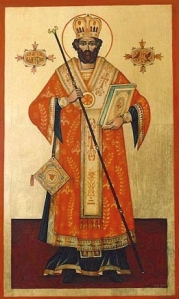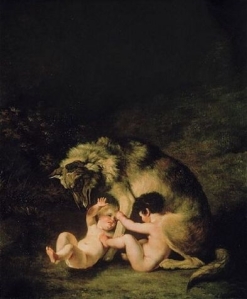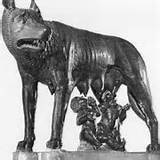Valentine’s Day has become a commercialized “celebration” of love in the West, as most of us are well aware. Most of us are taught that Valentine’s Day originates with the Christian saint, Valentine. The origin of St. Valentine, and how many St. Valentines there were, remains a mystery. One story is that he was a Catholic, martyred for his Christian faith. The other, he was a temple priest jailed for defiance during the reign of Claudius. Whoever he was, Valentine really existed because archaeologists have unearthed a Roman catacomb and an ancient church dedicated to Saint Valentine. In 496 AD Pope Gelasius marked February 14th as a celebration in honor of his martyrdom.
The first representation of Saint Valentine appeared in a The Nuremberg Chronicle, a great illustrated book printed in 1493. Additional evidence that Valentine was a real person is that archaeologists have unearthed a Roman catacomb and an ancient church dedicated to Saint Valentine. Alongside a woodcut portrait of him, text states that Valentinus was a Roman priest martyred during the reign of Claudius the Goth [Claudius II]. Since he was caught marrying Christian couples and aiding any Christians who were being persecuted under Emperor Claudius in Rome. Helping Christians was considered a crime; Valentinus was arrested and imprisoned. Claudius took a liking to this prisoner, until Valentinus made a strategic error; he tried to convert the Emperor. Whereupon, the priest was condemned to death. He was beaten with clubs and stoned. When that didn’t kill him, he was beheaded outside the Flaminian Gate [circa 269]. In the Roman Catholic Church the name Valentinus does not occur in the earliest list of Roman martyrs, compiled by the Chronographer of 354. But it already can be found in the Martyrologium Hieronymianum, which was compiled, from earlier local sources, between 460 and 544. The feast of St. Valentine of February 14 was first established in 496 by Pope Gelasius I, who included Valentine among all those “… whose names are justly reverenced among men, but whose acts are known only to God.” As Gelasius implies, nothing was yet known to him about his life.{1}
However, there is a much older pagan celebration that occurred around February 14th that most are unaware. The celebration of Lupercalia was celebrated at this time to avert evil spirits and purify the city, releasing health and fertility. The Roman god Lupercus was the god of shepherds, and was often identified with the god Pan. The priests of Lupercus wore goat skins. Plutarch wrote of Lupercalia stating, “Lupercalia, of which many write that it was anciently celebrated by shepherds, and has also some connection with the Arcadian Lycaea. At this time many of the noble youths and of the magistrates run up and down through the city naked, for sport and laughter striking those they meet with shaggy thongs. And many women of rank also purposely get in their way, and like children at school present their hands to be struck, believing that the pregnant will thus be helped in delivery, and the barren to pregnancy.”
Lupercalia was also celebrated partly in honor of Lupa, the she-wolf who suckled the infant orphans, Romulus and Remus, the founders of Rome. The festival was celebrated near the cave of Lupercal on the Palatine Hill, and it began with the sacrifice by the Luperci [brothers of the wolf], or the Flamen Dialis [High Priests of Jupiter] of two male goats and a dog. Next, two young patrician Luperci were led to the altar, to be anointed on their foreheads with the sacrificial blood, which was wiped off the bloody knife with wool soaked in milk, after which they were expected to smile and laugh. The sacrificial feast followed, where the Luperci cut thongs from the skins of the animals, which were called februa, dressed themselves in the skins of the sacrificed goats, in imitation of Lupercus, and ran round the walls of the old Palatine city. The path was marked with stones, and with the thongs in their hands in two bands, they would strike the people who crowded near. Girls and young women would line up on their route to receive lashes from these whips. This was supposed to ensure fertility, prevent sterility in women and ease the pains of childbirth. The thongs, or februa, is where the name of the month of February originates.
By the 5th century, celebration of public Pagan rites had been outlawed, under Pope Gelasius. Incidentally, the same pope who dedicated February 14th as St. Valentine’s Day.
A Prayer to St. Valentine
Dear Lord, who art high in the Heavens,
Giver of Love and Passion,
And He who strings the heart’s cords,
Lead the Lovers this day, February ten plus four.
The day during the month of two,
When the date is the perfect number of God
Greater two souls and two hearts.
Some Loves are fleeting ,
But that which is built on you will never fail.
So guide the Lovers to know what is to be.
Your truths the Lovers’ mouths should speak,
For Your truth is that which is honest to the heart.
Only this, then, should pass over the red lips of the Lovers.
References:
1-) http://www.catholic.org/saints/saint.php?saint_id=159
2-) https://en.wikipedia.org/wiki/Lupercalia
Other St. Valentine’s Prayers : http://www.catholic.org/prayers/prayer.php?s=100





